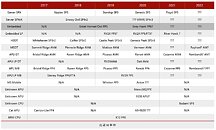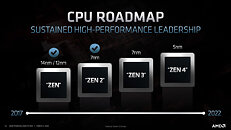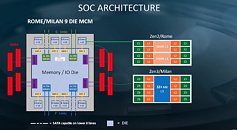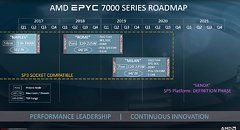
Distant Blips on the AMD Roadmap Surface: Rembrandt and Raphael
Several future AMD processor codenames across various computing segments surfaced courtesy of an Expreview leak that's largely aligned with information from Komachi Ensaka. It does not account for "Matisse Refresh" that's allegedly coming out in June-July as three gaming-focused Ryzen socket AM4 desktop processors; but roadmap from 2H-2020 going up to 2022 sees many codenames surface. To begin with, the second half of 2020 promises to be as action packed as last year's 7/7 mega launch. Over in the graphics business, the company is expected to debut its DirectX 12 Ultimate-compliant RDNA2 client graphics, and its first CDNA architecture-based compute accelerators. Much of the processor launch cycle is based around the new "Zen 3" microarchitecture.
The server platform debuting in the second half of 2020 is codenamed "Genesis SP3." This will be the final processor architecture for the SP3-class enterprise sockets, as it has DDR4 and PCI-Express gen 4.0 I/O. The EPYC server processor is codenamed "Milan," and combines "Zen 3" chiplets along with an sIOD. EPYC Embedded (FP6 package) processors are codenamed "Grey Hawk."
The server platform debuting in the second half of 2020 is codenamed "Genesis SP3." This will be the final processor architecture for the SP3-class enterprise sockets, as it has DDR4 and PCI-Express gen 4.0 I/O. The EPYC server processor is codenamed "Milan," and combines "Zen 3" chiplets along with an sIOD. EPYC Embedded (FP6 package) processors are codenamed "Grey Hawk."






